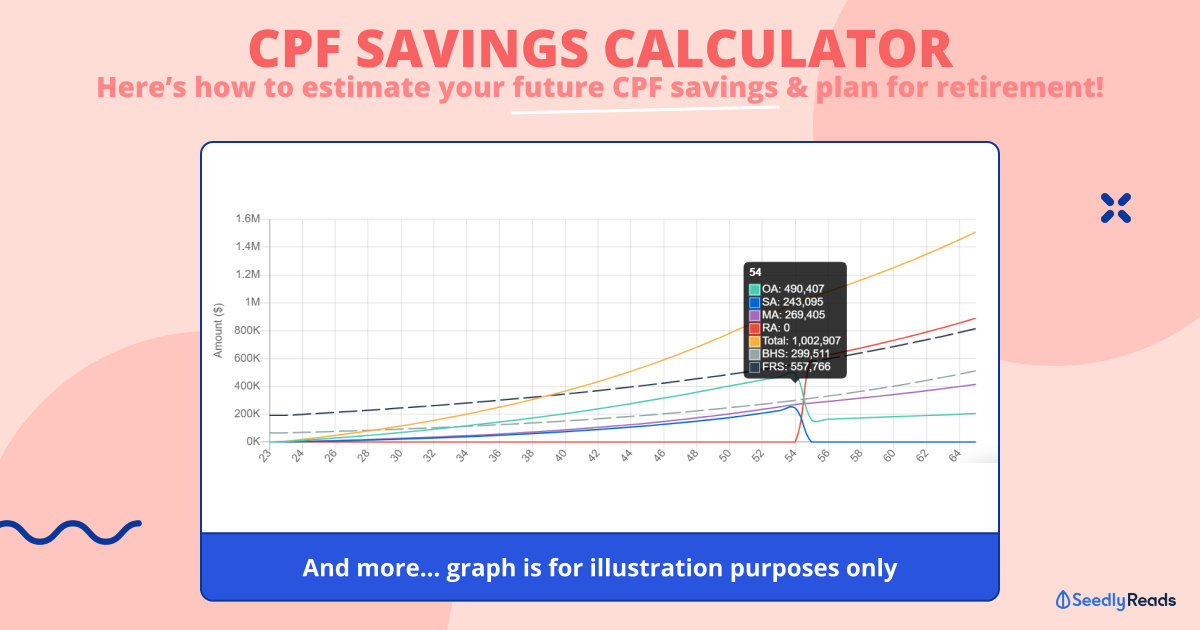
Fidelity offers several different retirement income options for individuals as well as businesses. The Guaranteed income Direct program of Fidelity allows employers to offer their employees an instant annuity. The plan is available in institutional pricing. There are options for choosing which insurer you prefer, as well support and digital resources to ease the transition. Individuals have the option to convert any amount or type retirement plan savings into a guaranteed income retirement. Individuals don't need to convert their entire retirement savings. They can keep any amounts in the workplace savings account.
Components of a retirement income plan
An important part of retirement planning is a retirement income plan. It helps you determine how much money you need for your retirement and when to take Social Security. It can help you decide how much money should be saved and invested. A retirement income plan will help you balance your risk tolerance and your financial goals. You can ensure that your plan is meeting all your income needs by reviewing it on a regular basis.
Your retirement income plan must provide you with guaranteed income, growth opportunities, and flexibility. For the best retirement income plans, it is important to combine income from multiple sources. A financial advisor will help you make the right financial decisions. It is important to understand that retirement income plans are contractual obligations. They are subject to the insurance company's claims-paying abilities. You will not have cash surrender value for these contracts.
Retirement income stream diversification
A diversified income stream can provide many benefits in retirement. First, you can have enough income to cover your essential expenses. A diversified approach to retirement income can include both guaranteed income sources for fixed expenses as well as income from investment accounts that is available for discretionary expenses. This strategy is designed to minimize market risks while allowing you to retain flexibility in case you are unable or unwilling to pay your dues.

Another benefit is inflation protection. Inflation affects your retirement income because it reduces the purchasing power over time. For this reason, you should consider investing in investments that offer inflation protection. Make sure your portfolio is suited to your time horizon, financial needs, and risk tolerance. Consider any changes to your financial situation and life expectancy. For instance, medical advances are improving people's health and prolonging their lives.
Managing risk while maximizing growth potential
To reduce risk and maximize your retirement growth potential, diversifying your investment portfolio is crucial. The most significant risk in retirement is outliving your assets, so you should never have 100% of your retirement portfolio in stocks or short-term investments. However, it is important to have an adequate exposure to growth investment.
The following sample target investment mix represents different levels and potential growth. Your investment goals and time horizon should guide the asset mix. For example, if you have less time to save money, you might consider short-term bonds or low-risk investments. However, if you have more time to invest, you should consider taking more risk and investing in a mixture of stocks and longer-term bonds.
A retirement income plan
The key to financial security is developing a retirement income program. This helps to determine when you should take Social Security. It also allows you to plan how your investments will be allocated to maximize growth and stability. Your retirement plan should be flexible and incorporate several sources of income to meet your needs. A financial planner can help you create the right plan. An income plan should be balanced between your financial goals, risk tolerance, and financial situation. To ensure your income is met, it is important that you monitor your plan.
Inflation can deplete your purchasing ability over time. You should invest in investments to protect your savings against inflation. Investing in diversified funds is a great way to diversify your investments and manage risk. Inflation, your time horizon, current financial status and other factors should all be considered when you are choosing investments for retirement income. Also, health care costs could take a huge chunk of your retirement paycheck. You should also consider Social Security and taxes when you are planning your retirement income.

Create a Roth 401(k).
Roth 401 (k), also known simply as a Roth, can be a great way to save money for retirement. Roth IRAs allow you to take advantage of tax savings which can help you get higher returns after taxes. It is easy to invest in a Roth IRA and has many benefits, including low fees and zero commissions. Whether you want to invest in stocks, bonds, or mutual funds, a Roth IRA is the right choice.
Roth 401 (k)s are exempt from tax and can be withdrawn at any time tax-free. You can make both pretax and Roth contributions, and you can choose which ones to use. Pretax contributions allow you to save more money and pay no tax until you withdraw the funds. Roth contributions will provide you with a tax-free distribution.
FAQ
What is estate planning?
Estate planning involves creating an estate strategy that will prepare for the death of your loved ones. It includes documents such as wills. Trusts. Powers of attorney. Health care directives. These documents will ensure that your assets are managed after your death.
What is risk-management in investment management?
Risk management is the art of managing risks through the assessment and mitigation of potential losses. It involves identifying, measuring, monitoring, and controlling risks.
Any investment strategy must incorporate risk management. The purpose of risk management, is to minimize loss and maximize return.
The key elements of risk management are;
-
Identifying the source of risk
-
Monitoring the risk and measuring it
-
Controlling the Risk
-
Manage the risk
How to choose an investment advisor
The process of selecting an investment advisor is the same as choosing a financial planner. Consider experience and fees.
This refers to the experience of the advisor over the years.
Fees represent the cost of the service. You should compare these costs against the potential returns.
It is essential to find an advisor who will listen and tailor a package for your unique situation.
Who can I trust with my retirement planning?
Many people find retirement planning a daunting financial task. It's not just about saving for yourself but also ensuring you have enough money to support yourself and your family throughout your life.
When deciding how much you want to save, the most important thing to remember is that there are many ways to calculate this amount depending on your life stage.
If you are married, you will need to account for any joint savings and also provide for your personal spending needs. If you're single, then you may want to think about how much you'd like to spend on yourself each month and use this figure to calculate how much you should put aside.
If you're working and would like to start saving, you might consider setting up a regular contribution into a retirement plan. Consider investing in shares and other investments that will give you long-term growth.
Talk to a financial advisor, wealth manager or wealth manager to learn more about these options.
Statistics
- As previously mentioned, according to a 2017 study, stocks were found to be a highly successful investment, with the rate of return averaging around seven percent. (fortunebuilders.com)
- If you are working with a private firm owned by an advisor, any advisory fees (generally around 1%) would go to the advisor. (nerdwallet.com)
- According to a 2017 study, the average rate of return for real estate over a roughly 150-year period was around eight percent. (fortunebuilders.com)
- According to Indeed, the average salary for a wealth manager in the United States in 2022 was $79,395.6 (investopedia.com)
External Links
How To
How to Invest your Savings to Make Money
You can earn returns on your capital by investing your savings into various types of investments like stock market, mutual fund, bonds, bonds, real property, commodities, gold and other assets. This is what we call investing. You should understand that investing does NOT guarantee a profit, but increases your chances to earn profits. There are many ways to invest your savings. Some of them include buying stocks, Mutual Funds, Gold, Commodities, Real Estate, Bonds, Stocks, and ETFs (Exchange Traded Funds). These methods will be discussed below.
Stock Market
Stock market investing is one of the most popular options for saving money. It allows you to purchase shares in companies that sell products and services similar to those you might otherwise buy. Also, buying stocks can provide diversification that helps to protect against financial losses. For example, if the price of oil drops dramatically, you can sell your shares in an energy company and buy shares in a company that makes something else.
Mutual Fund
A mutual fund is a pool of money invested by many individuals or institutions in securities. They are professionally managed pools with equity, debt or hybrid securities. A mutual fund's investment objectives are often determined by the board of directors.
Gold
Long-term gold preservation has been documented. Gold can also be considered a safe refuge during economic uncertainty. Some countries use it as their currency. Gold prices have seen a significant rise in recent years due to investor demand for inflation protection. The price of gold tends to rise and fall based on supply and demand fundamentals.
Real Estate
The land and buildings that make up real estate are called "real estate". When you buy realty, you become the owner of all rights associated with it. For additional income, you can rent out a portion of your home. You could use your home as collateral in a loan application. The home may also be used to obtain tax benefits. Before purchasing any type or property, however, you should consider the following: size, condition, age, and location.
Commodity
Commodities can be described as raw materials such as metals, grains and agricultural products. These items are more valuable than ever so commodity-related investments are a good idea. Investors who wish to take advantage of this trend must learn to analyze graphs and charts, identify trends and determine the best entry point to their portfolios.
Bonds
BONDS can be used to make loans to corporations or governments. A bond is a loan that both parties agree to repay at a specified date. In exchange for interest payments, the principal is paid back. When interest rates drop, bond prices rise and vice versa. Investors buy bonds to earn interest and then wait for the borrower repay the principal.
Stocks
STOCKS INVOLVE SHARES OF OWNERSHIP IN A CORPORATION. A share represents a fractional ownership of a business. Shareholders are those who own 100 shares of XYZ Corp. You also receive dividends when the company earns profits. Dividends are cash distributions to shareholders.
ETFs
An Exchange Traded Fund (ETF) is a security that tracks an index of stocks, bonds, currencies, commodities, or other asset classes. ETFs are traded on public exchanges like traditional mutual funds. The iShares Core S&P 500 (NYSEARCA - SPY) ETF is designed to track performance of Standard & Poor’s 500 Index. This means that if SPY is purchased, your portfolio will reflect the S&P 500 performance.
Venture Capital
Venture capital is private financing venture capitalists provide entrepreneurs to help them start new businesses. Venture capitalists can provide funding for startups that have very little revenue or are at risk of going bankrupt. Venture capitalists typically invest in companies at early stages, like those that are just starting out.